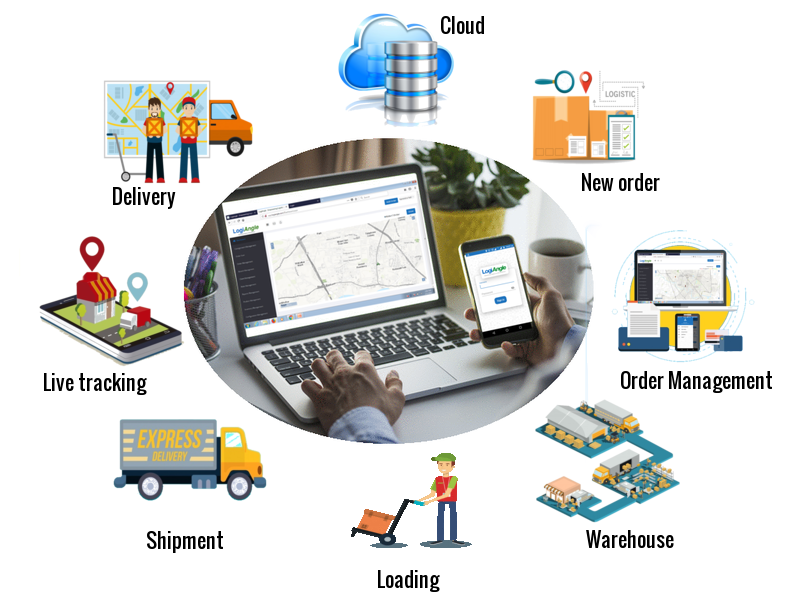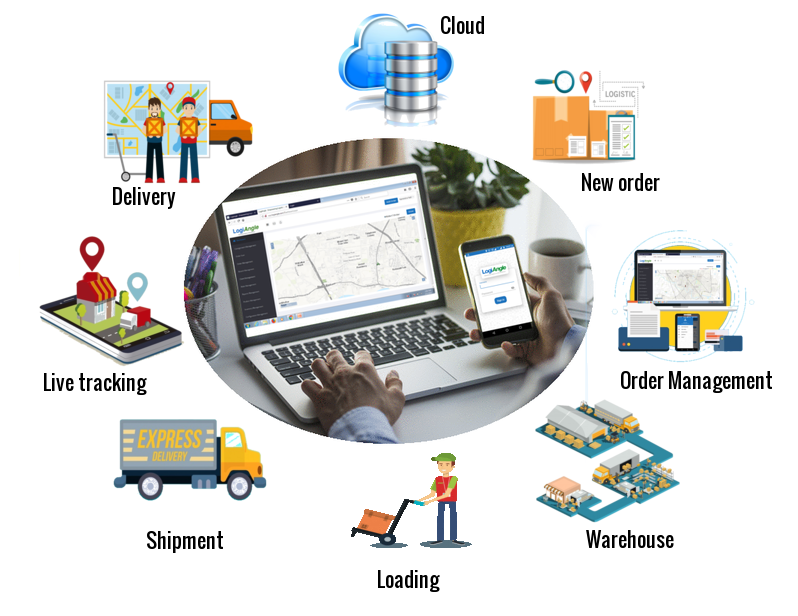Future Trends in Supply Chain and Warehousing
The world of supply chain and warehousing is evolving at an unprecedented rate. As technological advancements and global challenges continue to shape industries, businesses must adapt to stay competitive. The future of supply chain management (SCM) is about increasing efficiency, improving sustainability, and leveraging new technologies to drive growth and customer satisfaction. In this article, we will explore key trends in supply chain and warehousing, how they will impact businesses, and the future of logistics in an ever-changing market.

1. Technological Advancements Shaping the Future
a) Artificial Intelligence (AI) and Machine Learning
AI and machine learning (ML) are two of the most significant technologies driving the future of supply chain and warehousing. These technologies enable businesses to predict demand patterns, optimize routes, and improve inventory management. By utilizing AI and ML, companies can:
- Enhance forecasting accuracy: Machine learning algorithms can process historical data to make more accurate predictions about inventory needs.
- Optimize supply chain processes: AI-powered systems can recommend the best delivery routes, reducing costs and enhancing delivery times.
- Automate warehouse operations: AI can improve order picking, reduce errors, and boost warehouse productivity by implementing intelligent robotic systems.
b) Robotics and Automation in Warehousing
Robots are becoming an essential part of the modern warehouse. From automated guided vehicles (AGVs) to robotic arms, these machines can take on repetitive tasks such as sorting, packing, and moving inventory. The advantages of robotics include:
- Increased efficiency: Robots can work 24/7, reducing human labor and increasing throughput.
- Reduced labor costs: With robots handling repetitive tasks, human workers can focus on more complex activities.
- Improved accuracy: Automated systems help minimize human error, leading to more precise order fulfillment and inventory tracking.
c) Internet of Things (IoT)
The Internet of Things (IoT) is transforming supply chain management by enabling real-time tracking of goods, vehicles, and assets. Sensors embedded in products, packages, or even warehouses provide valuable insights, allowing businesses to:
- Monitor inventory levels: IoT devices can track stock levels, triggering automatic reorders when necessary.
- Track shipments in real time: IoT-enabled GPS devices offer visibility into the movement of goods, improving supply chain transparency.
- Predict maintenance needs: IoT sensors in machinery or vehicles can predict failures before they happen, reducing downtime and maintenance costs.
d) Blockchain for Transparency and Security
Blockchain technology is quickly making its mark on supply chain management by providing secure, transparent, and decentralized record-keeping. In warehousing and logistics, blockchain can:
- Ensure traceability: Blockchain allows businesses to track the provenance of products and materials throughout the supply chain, ensuring authenticity and reducing fraud.
- Streamline payments: Blockchain can eliminate the need for intermediaries in financial transactions, speeding up payments and reducing costs.
- Increase security: The decentralized nature of blockchain ensures that sensitive data remains secure and tamper-proof.
2. Sustainability and Environmental Impact
As businesses face increasing pressure to reduce their environmental footprint, sustainability is becoming a central focus in supply chain and warehousing operations. The future will see an increased emphasis on eco-friendly practices such as:
a) Green Warehousing
Green warehousing refers to the implementation of environmentally friendly practices in the storage, packaging, and distribution of goods. This trend includes:
- Energy-efficient buildings: Warehouse owners are increasingly adopting energy-saving measures, such as solar panels and LED lighting, to reduce energy consumption.
- Eco-friendly packaging: Companies are focusing on sustainable packaging materials, such as biodegradable plastics, to reduce waste.
- Waste reduction: Through improved inventory management and recycling programs, warehouses are working to minimize waste and optimize resource use.
b) Sustainable Supply Chain Practices
Supply chains are becoming more sustainable by prioritizing the use of renewable energy, sustainable sourcing, and carbon-neutral logistics. By adopting these practices, companies are aiming to:
- Reduce carbon footprints: Through alternative energy sources like wind and solar, businesses are decreasing their reliance on fossil fuels.
- Prioritize ethical sourcing: Companies are increasingly choosing suppliers that adhere to environmental and social sustainability standards.
- Minimize emissions: Sustainable transportation options such as electric vehicles and drone deliveries are helping to lower greenhouse gas emissions.
c) Circular Economy Models
A circular economy focuses on reducing waste and extending the lifecycle of products. In supply chain management, circular economy principles encourage businesses to:
- Reuse and recycle materials: Products and packaging are designed to be reused or recycled, reducing the demand for raw materials.
- Resell or repurpose products: Instead of being discarded, goods are refurbished, resold, or repurposed, contributing to a more sustainable economy.
3. The Rise of E-Commerce and Last-Mile Delivery
With the continued growth of e-commerce, businesses are facing increased pressure to streamline last-mile delivery and enhance customer satisfaction. Some key trends shaping this area include:
a) Same-Day Delivery and Faster Fulfillment
As consumer expectations rise, same-day and next-day delivery are becoming standard offerings for many e-commerce businesses. Companies are focusing on:
- Optimized routing algorithms: AI-powered algorithms help determine the most efficient delivery routes, reducing delivery times.
- Micro-warehouses: E-commerce businesses are setting up small fulfillment centers in urban areas to speed up delivery times.
b) Crowdsourced Delivery Models
Crowdsourced delivery platforms, such as Uber Freight and Postmates, are gaining popularity as companies seek cost-effective alternatives to traditional logistics services. These platforms allow businesses to tap into a network of independent contractors for flexible and scalable delivery options.
c) Drones and Autonomous Vehicles
The future of last-mile delivery will involve the widespread use of drones and autonomous vehicles. These technologies promise to:
- Increase speed: Drones can deliver small packages quickly and directly to consumers, bypassing traffic and delays.
- Reduce costs: Autonomous vehicles reduce the need for human drivers, cutting down on labor costs and improving operational efficiency.
4. Workforce Transformation and Skills Development
As supply chain and warehousing industries evolve, so too must the workforce. Automation, robotics, and new technologies are changing the skill sets required for jobs in the sector. Companies are investing in:
- Upgrading skills: Workers will need to learn how to operate and maintain advanced technologies, such as robots, AI, and IoT devices.
- Reskilling and training: Ongoing training programs will be crucial for workers to stay competitive in a rapidly changing market.
- Hybrid job roles: The line between manual labor and technical roles will continue to blur as automation becomes more integrated into everyday operations.
5. Supply Chain Resilience and Risk Management
The COVID-19 pandemic underscored the need for resilient supply chains capable of responding to disruptions. Going forward, businesses will focus on:
a) Diversified Sourcing
Companies are seeking to reduce dependence on a single source or region by diversifying suppliers and building more flexible networks. This reduces the risk of disruptions caused by geopolitical tensions, natural disasters, or pandemics.
b) Predictive Analytics and Risk Mitigation
Predictive analytics allows businesses to anticipate and mitigate potential disruptions by analyzing historical data and identifying trends. Companies are using this data to:
- Optimize inventories: By forecasting demand more accurately, businesses can prevent shortages or overstocking.
- Develop contingency plans: Companies are creating backup plans to quickly pivot when disruptions occur, ensuring that operations continue smoothly.
FAQs
1. What are the key technologies impacting supply chain and warehousing?
Technologies such as AI, machine learning, robotics, IoT, and blockchain are revolutionizing supply chain and warehousing operations by enhancing automation, improving transparency, and reducing costs.
2. How can sustainability be incorporated into supply chain management?
Sustainability can be incorporated through green warehousing practices, ethical sourcing, carbon-neutral logistics, and implementing circular economy models to minimize waste and reduce environmental impact.
3. What is the role of automation in warehousing?
Automation improves warehouse efficiency by performing repetitive tasks such as order picking, sorting, and inventory management, which reduces errors and increases throughput.
4. How is e-commerce changing supply chain dynamics?
E-commerce has led to increased demand for same-day delivery, faster fulfillment, and last-mile delivery innovations, such as **
drones** and autonomous vehicles, to meet customer expectations.
5. What is the future of supply chain resilience?
Supply chains will become more resilient by diversifying suppliers, utilizing predictive analytics, and creating contingency plans to manage risks and handle disruptions effectively.
Conclusion
The future of supply chain and warehousing is driven by innovation, sustainability, and adaptability. As technologies like AI, automation, and IoT become more integrated into operations, businesses will be better equipped to meet customer demands and address global challenges. By embracing these trends, companies can improve efficiency, reduce costs, and ensure a sustainable future. As we move into the next decade, those who prioritize these advancements will be the leaders in the global supply chain revolution.



